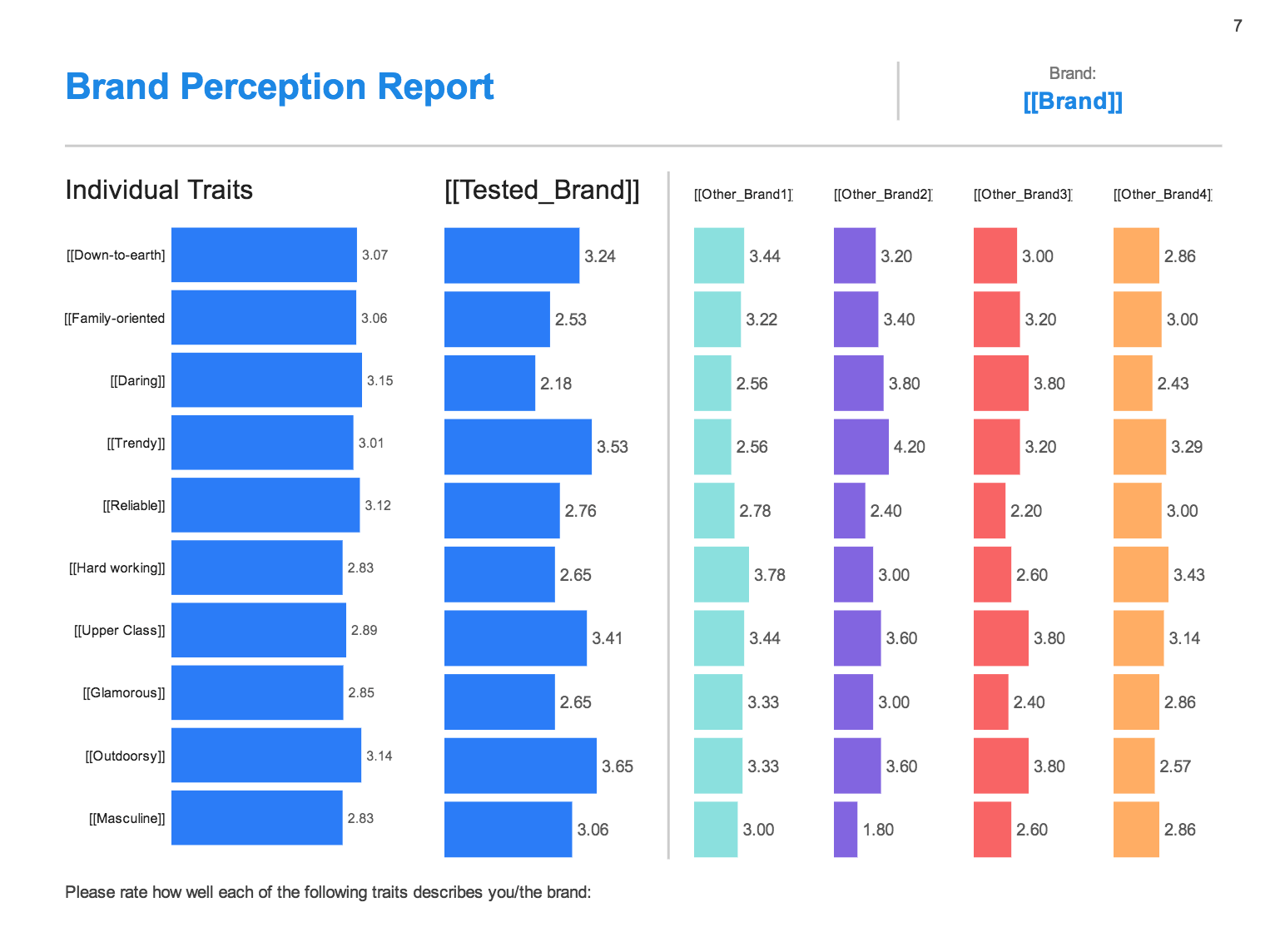
7 min read
Who owns your brand? Your marketing team? Your public relations staff? Your CEO? In a very real sense, your customers own your brand. It is what they think it is. It promises what they say it promises.
Do you know how many customers recall or recognize your brand name and logo? Use our free brand awareness survey template to find out.
Brand perception can be formed over time through different customer experiences. A customer’s personal experience with your product or service can spread throughout a market and solidify a positive or negative reputation among those who may know nothing about your company at all.
Brand perception surveys hold a key position in promoting positive brand equity – the value premium a brand brings to a business. Businesses want to maintain high levels of brand equity as this can have a knock-on effect on sales and profits.
As customers have ‘ownership’ over the brand’s image in their minds, it’s important that businesses can influence this. To do this, you first need to measure brand perception regularly, track it over time, and identify what drives improvements.
A brand perception survey is a painless and cost-effective way to measure your customer’s views on your brand. It’s regularly employed by brand managers as it provides more flexibility than in-person workshops: surveys can be completed in the target audience’s own time.
There are 4 core human factors that lead to brand affinity:
When you design your brand perception survey, focus on these 4 key areas that will help you understand the cognitive, emotional, language, and action factors of your brand. The following sections will describe each area and provide some example questions to start you off.
These questions should draw out the associations that consumers connect to your brand. You can start off with open-ended questions and then tighten using multi or single-select lists.
Example questions:
These questions should attempt to identify the feelings connected to your brand, and if those draw them closer to the brand or pull them away.
Example questions:
These questions teach you how consumers internalize and understand your brand by asking how they would describe it to others.
Example questions:
These questions should answer how positive or negative a consumer’s previous experience has been with your brand.
Example questions:
Try to take into consideration who the best audience for your survey is. The kinds of insights you can draw from your survey will depend largely on who you invite to participate. For example, if your brand is about comfortable maternity-wear, you may choose to survey one (or more) of three different audiences:
In this way, you would gain customer perceptions from different perspectives along the customer sales cycle, helping you focus on process and product improvements.
Each of these three approaches provides unique and valuable insights.
Brand perception surveys have three main outcomes:
Tracking and managing these three stages can be hard to do without an intuitive solution.
The Qualtrics Brand Perception Study is a solution that gives a 360-degree understanding of how effective your marketing and messaging is. It’s an all-in-one product that helps you:
Prebuilt reports, like below, show you instant analysis of your data, so you can spend more time delivering results.

Over time, results can be monitored and compared to see how your brand perception changes across different audiences.
Better understand the health of your brand with our free brand awareness survey template